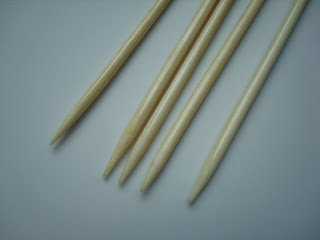So then I just wanted to get straight to business. Well, that is the kind of business with only two colors, and not more than 7 stitches in one color. I still haven't figured out how to cross the yarns on the back without switching the skeins around, which I'm sure is not the way to do it.
I wanted a round and flowery pattern, so I was happy to find that Pinneguri's beautiful thistle pattern doesn't have more than 7 stitches of one color.
After some swatching (yes, indeed), I decided to cast on 288 stitches, which is 9 pattern repeats. I cast on with the dominant color (which in my case is an orange-blue-brown multicolored Kauni, I used a grey one as background) and tried a tubular cast on first, my new favorite for rib! But it really does not work for a two-color rib. It was too bulky, so in the end, I used a standard cast-on, and - IMPORTANT - one row of all knit stitches in alternating color, followed by the two-color rib proper. This way, bumps of wrong color are avoided.
 Then, after a few rows of rib, 28 cm of the pattern followed
Then, after a few rows of rib, 28 cm of the pattern followed I have to admit that the blue color blends more into the gray background than I had expected. But, this is really just an experiment, so I guess that's ok. As you can see, I've started decreasing for arms and V-neck (more about that later - I'm using some numbers I came up with, so we'll have to wait and see how it works), with some stitches for steeking inserted. I've of course never made a steek, so in that respect, too, this is an experiment. In other words, don't worry about the colors when the whole thing may still fall apart later!
I have to admit that the blue color blends more into the gray background than I had expected. But, this is really just an experiment, so I guess that's ok. As you can see, I've started decreasing for arms and V-neck (more about that later - I'm using some numbers I came up with, so we'll have to wait and see how it works), with some stitches for steeking inserted. I've of course never made a steek, so in that respect, too, this is an experiment. In other words, don't worry about the colors when the whole thing may still fall apart later!





